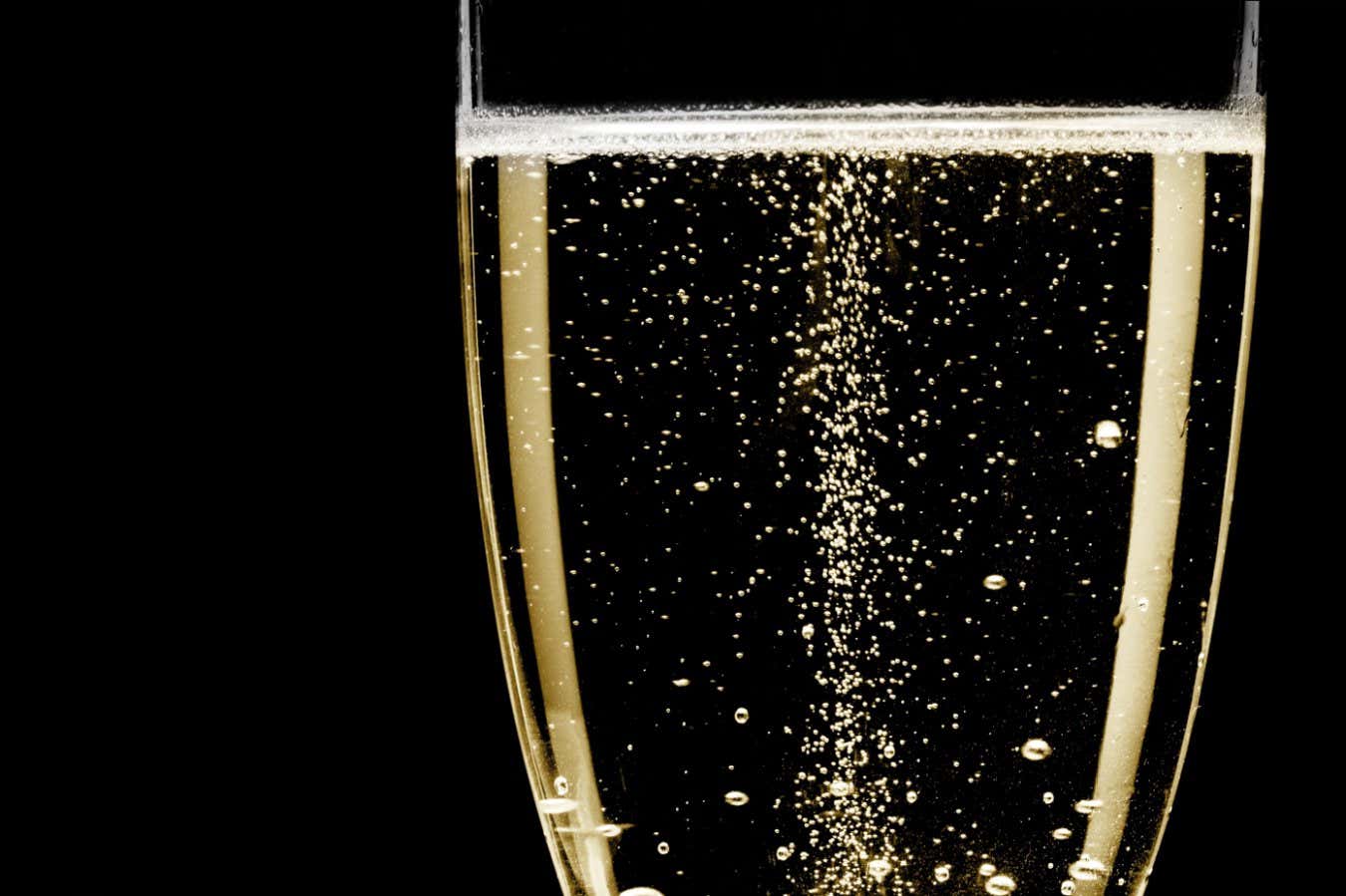The surfactants in champagne may allow bubbles to rise in a straight column
Shutterstock / Billion Photos
Bubbles in champagne and other carbonated drinks can rise in straight columns thanks to chemicals that also give these drinks their flavor.
When bubbles rise in a liquid, they create a wake behind them, which can knock other bubbles off course. However, in champagne, bubbles manage to rise vertically in straight columns without being pushed off course.
Researchers at Brown University in Rhode Island, led by Roberto Zenit, removed the gas from carbonated drinks including carbonated water, beer, and champagne. They poured the liquids into a tank with a needle at the bottom, pumped bursts of air through the needle, and observed how the bubbles rose.
The researchers combined their observations with a mathematical model that describes how certain properties of liquids determine the amount of swirling that occurs near a bubble. They found that two characteristics, the size of the bubbles and the concentration of molecules called surfactants, drive the swirling. Surfactants include fatty acids that give champagne its fruity notes and proteins that contribute to the flavor of beer. These molecules can change the movement of the bubbles’ surface by sticking to them.
Large, elliptical bubbles and bubbles coated with surfactants encourage more swirling, which disrupts the wakes of nearby bubbles and prevents sideways knocking. This allows the bubbles to rise in stable, vertical chains, one above another. Although bubbles in champagne are usually too small to form steady columns, the presence of fatty acids in the sparkling wine enables them to do so.
According to Stéphane Dorbolo at the University of Liege in Belgium, understanding the interaction between surfactants and bubbles is challenging because the motion of bubbles can change the concentration of surfactants in the liquid. He also suggests that insights from this study could have implications for non-carbonated drinks like whiskey, where experts estimate the alcohol content by observing how the liquid bubbles when shaken.
Gérard Liger-Belair at the University of Reims Champagne-Ardenne in France emphasizes that understanding the behavior of groups of bubbles is important for industrial processes such as froth flotation, used to separate different particles mixed into water.
Topics:
- food science/
- fluid dynamics








